- In Memoriam -
Liu Tungsheng and Andrei Dodonov
China and Russia are important loess countries. The Loess Plateau in China, about the size of France, is probably the most important and impressive accumulation of loess in the World. The enthusiasm and commitment of Russian loess scholars has contributed to the largest loess literature in the World- that in the Russian language.
 We celebrate the lives of two loess scholars; one Russian and one Chinese. Andrei Dodonov of the Russian Academy of Sciences and Liu Tungsheng of the Chinese Academy of Sciences, both contributing significantly to the development of loess science. Dodonov was a scholar in the tradition of V.A.Obruchev, an outward-looking, field-based scientist with a worldwide vision of loess stratigraphy. He was a follower and admirer of Obruchev and was co-author of a famous paper of appreciation. He saw the ideas and influence of Obruchev extending up into the present day. Dodonov looked towards Asia, as Obruchev did, and his lasting contribution to loess scholarship will lie in his work on loess stratigraphy in Central Asia.
We celebrate the lives of two loess scholars; one Russian and one Chinese. Andrei Dodonov of the Russian Academy of Sciences and Liu Tungsheng of the Chinese Academy of Sciences, both contributing significantly to the development of loess science. Dodonov was a scholar in the tradition of V.A.Obruchev, an outward-looking, field-based scientist with a worldwide vision of loess stratigraphy. He was a follower and admirer of Obruchev and was co-author of a famous paper of appreciation. He saw the ideas and influence of Obruchev extending up into the present day. Dodonov looked towards Asia, as Obruchev did, and his lasting contribution to loess scholarship will lie in his work on loess stratigraphy in Central Asia.
Liu had an absolutely pivotal role in the development of loess science. He was responsible for an enormous shift in the direction and emphasis in loess research- this was not just the establishment of a new paradigm with the basic structure staying unchanged, but an entirely new direction with an entirely new set of objectives. When Liu stood up to give his paper at the Lublin Loess Symposium during the 6th INQUA Congress in 1961 the world of loess changed fundamentally. There have been paradigm shifts in the loess world; when we switched from the Lyellian lacustrine theory of deposit formation to the Richthofen idea of aeolian deposition- that was a paradigm shift; a new way of looking at things. Liu’s exposure of the complex Chinese stratigraphy was more like a leap on to a parallel road than a simple re-orientation of viewpoint.
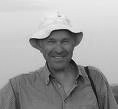 Various ironies are visible. Soon after Liu revealed the wonders of the Chinese loess at the 6th INQUA Congress, the cultural revolution arrived and he was forced to go north to perform unconnected labours. A ten year gap appeared in Chinese loess investigations but once normality was restored vast efforts were made in China and it rapidly became a leader in loess research. The Loess Institute was opened in Xian, and there was a great celebration of loess at the 1991 INQUA Congress in Beijing. When Liu died in 2008 he was the most illustrious member of a large Chinese loess community. In Soviet times there was widespread loess research in Russia and in the other countries of the Soviet Union. Dodonov was part of this large effort but as the Soviet Union was dismantled enthusiasm for loess research diminished, and by the time of his death in 2008 Dodonov was a member of a very small band of committed scholars. Political vagaries had major effects on the lives and careers of our two loess heroes, but they each managed vast submissions to our collective scholarly well-being, and we recognise their great contributions. The loess community bids a dusty farewell.
Various ironies are visible. Soon after Liu revealed the wonders of the Chinese loess at the 6th INQUA Congress, the cultural revolution arrived and he was forced to go north to perform unconnected labours. A ten year gap appeared in Chinese loess investigations but once normality was restored vast efforts were made in China and it rapidly became a leader in loess research. The Loess Institute was opened in Xian, and there was a great celebration of loess at the 1991 INQUA Congress in Beijing. When Liu died in 2008 he was the most illustrious member of a large Chinese loess community. In Soviet times there was widespread loess research in Russia and in the other countries of the Soviet Union. Dodonov was part of this large effort but as the Soviet Union was dismantled enthusiasm for loess research diminished, and by the time of his death in 2008 Dodonov was a member of a very small band of committed scholars. Political vagaries had major effects on the lives and careers of our two loess heroes, but they each managed vast submissions to our collective scholarly well-being, and we recognise their great contributions. The loess community bids a dusty farewell.
Miriam Vriend and Endre Krolopp
The special issue of Quaternary International entitled The Second Loessfest (2009), (Volume 240, Issues 1-2, August 2011) is dedicated to our colleagues Miriam Vriend and Endre Krolopp who have left us forever;we mourn their passing butwewill always cherish the memory of their significant contributions to loess research.
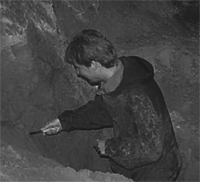
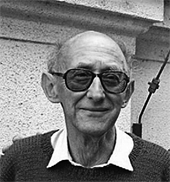
Professor Dr. Henryk Maruszczak
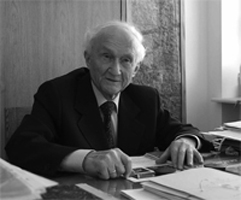 It is with deep sorrow that we inform you about the death of Professor Dr. Henryk Maruszczak doyen of the Polish geographers, geomorphologist, paleogeographer, physical geographer who has left us forever on October 12th, 2012 at the age of 90.
Professor Henryk Maruszczak was a co-originator of the Lublin school of loess research. He studied relief of loess areas, lithology, stratigraphy and typology of loess, and also undertook regional investigations of the Ukrainian, Russian, Bulgarian and German loess deposits. At the same time he conducted many-sided research, among other things on stratigraphy and palaeogeography of Quaternary, karst phenomena, mechanical and chemical fluvial denudation, slope asymmetry conditioned by climate, development conditions of periglacial cover deposits and cryogenic structures. In the last years he studied the changes of natural environment in Polish territory in historical times. He published about 300 papers, was editor or co-editor of 17 collective volumes. The results of his studies placed him in a circle of specialists of world renown. Some of his publications were of fundamental importance.
It is with deep sorrow that we inform you about the death of Professor Dr. Henryk Maruszczak doyen of the Polish geographers, geomorphologist, paleogeographer, physical geographer who has left us forever on October 12th, 2012 at the age of 90.
Professor Henryk Maruszczak was a co-originator of the Lublin school of loess research. He studied relief of loess areas, lithology, stratigraphy and typology of loess, and also undertook regional investigations of the Ukrainian, Russian, Bulgarian and German loess deposits. At the same time he conducted many-sided research, among other things on stratigraphy and palaeogeography of Quaternary, karst phenomena, mechanical and chemical fluvial denudation, slope asymmetry conditioned by climate, development conditions of periglacial cover deposits and cryogenic structures. In the last years he studied the changes of natural environment in Polish territory in historical times. He published about 300 papers, was editor or co-editor of 17 collective volumes. The results of his studies placed him in a circle of specialists of world renown. Some of his publications were of fundamental importance.
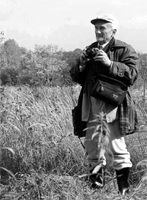 Professor Henryk Maruszczak was a member of the Committee for Quaternary Research of the Polish Academy of Sciences in the years 1964-2006, and chairman of the Loess Commission of this Committee (1987-1993). He initiated and coordinated the Polish-Ukrainian collaboration in the research on loess and glacial deposits in SE Poland and NW Ukraine; he co-organized 7 field seminars on stratigraphic correlation of these deposits. Such meetings are organized to the present day by the followers of Professor. He was also a regular member of the INQUA Loess Commission (1982-1995), and a coordinator of the “Europe” Working Group of this Commission. INQUA conferred the title of honorary member on Professor Henryk Maruszczak in recognition of his scientific, editorial and organizational services.
In the person of Professor Henryk Maruszczak we have lost an outstanding scientist who inspired and educated several generations of researchers working on the Quaternary deposits, and especially loess, in Central Europe.
Professor Henryk Maruszczak was a member of the Committee for Quaternary Research of the Polish Academy of Sciences in the years 1964-2006, and chairman of the Loess Commission of this Committee (1987-1993). He initiated and coordinated the Polish-Ukrainian collaboration in the research on loess and glacial deposits in SE Poland and NW Ukraine; he co-organized 7 field seminars on stratigraphic correlation of these deposits. Such meetings are organized to the present day by the followers of Professor. He was also a regular member of the INQUA Loess Commission (1982-1995), and a coordinator of the “Europe” Working Group of this Commission. INQUA conferred the title of honorary member on Professor Henryk Maruszczak in recognition of his scientific, editorial and organizational services.
In the person of Professor Henryk Maruszczak we have lost an outstanding scientist who inspired and educated several generations of researchers working on the Quaternary deposits, and especially loess, in Central Europe.
Maria Łanczont
Vice-chairman of the Committee for Quaternary Research of the Polish Academy of Sciences and chairman of the Loess Commission of the Committee for Quaternary Research

